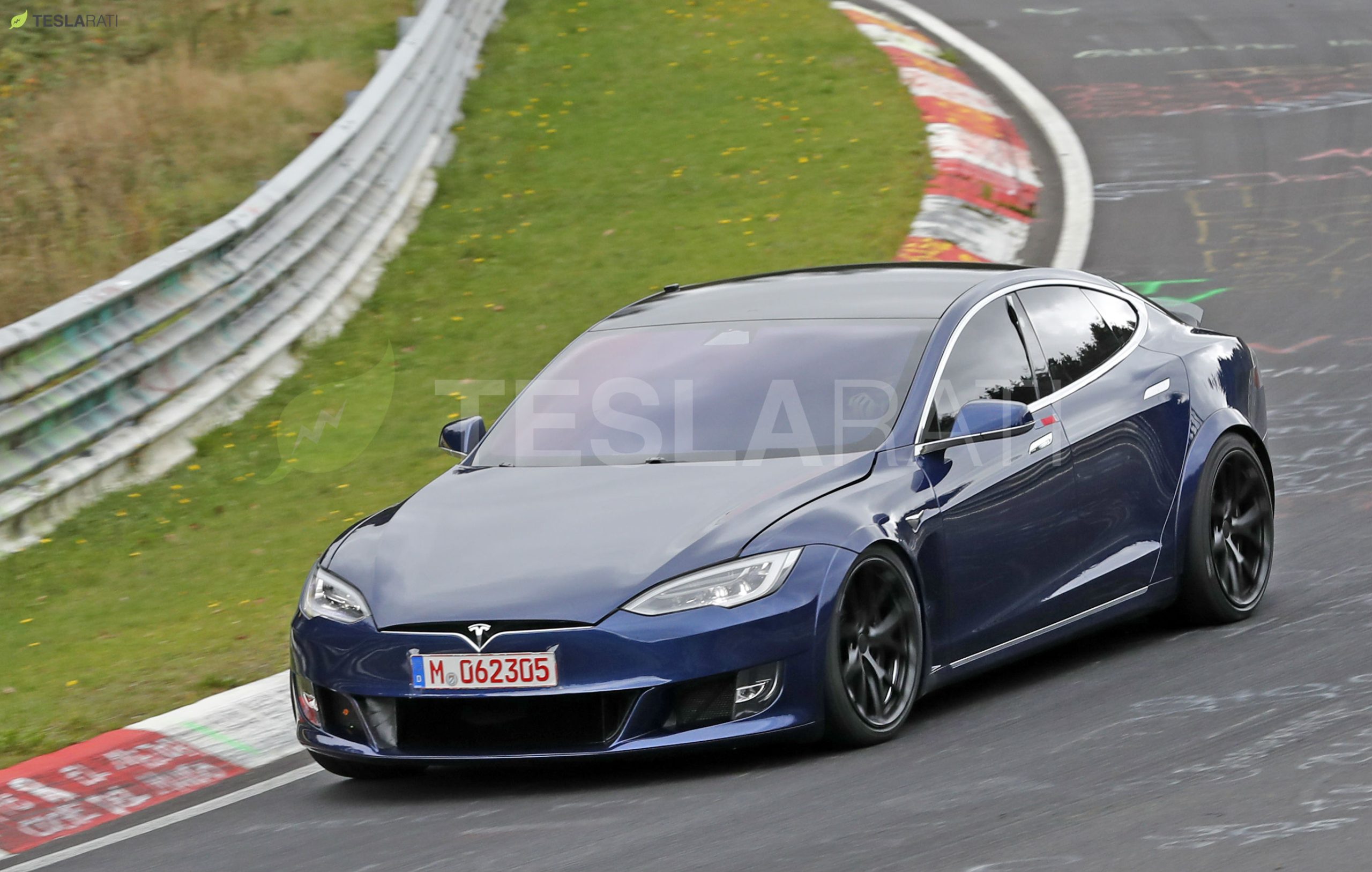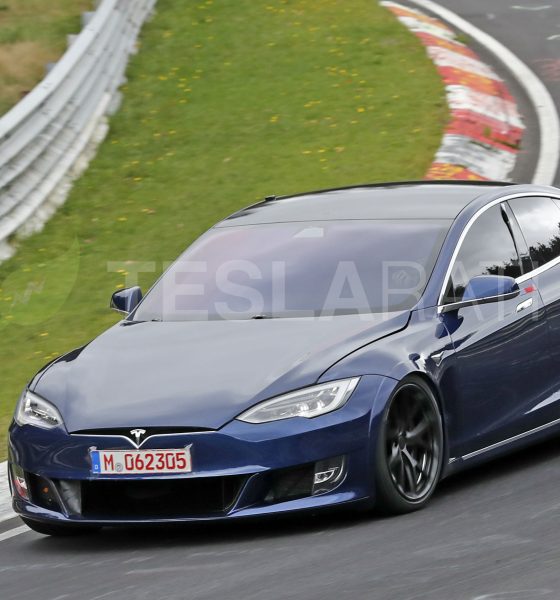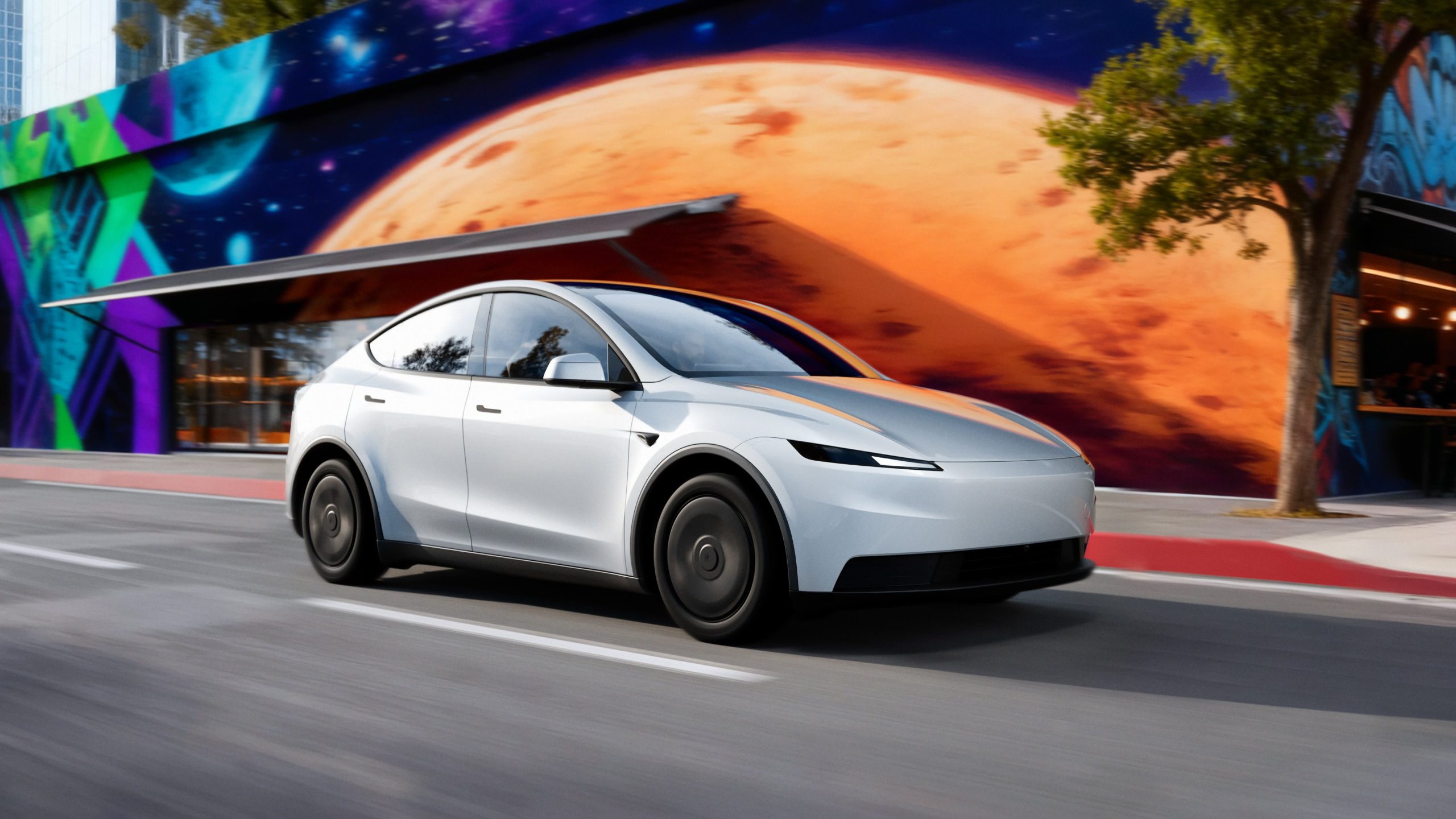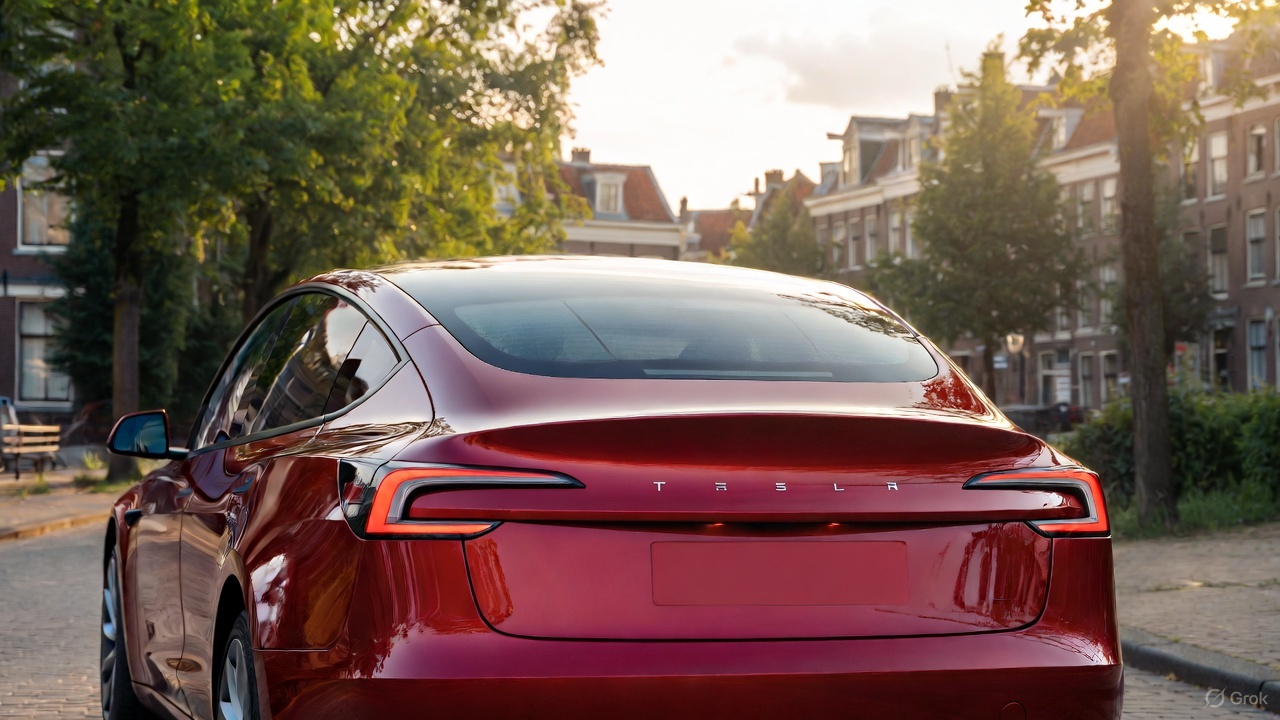

News
Follow the Leader: Tesla’s Influence on Other Manufacturers
As enthusiasts of Tesla’s automobiles and what comes with them in terms of technology, we all know that their cars offer things that no other manufacturer can offer. This is not only because of Tesla’s sizeable lead in battery technology and entertainment features but simply because the cars provide a design and aesthetic that is just different than others. We all know Tesla seems to handle themselves in a more “fun” way than any other large company that builds vehicles; one would only have to see Fart Mode to know that this company is a lot different than others.
However, we see carmakers adapt more and more to Tesla’s style, technology, look, and demeanor. Every day, it seems like another company is doing something that is geared toward taking a chunk out of Tesla’s market. This idea does not only have to do with the company’s increasing performance and technology standards, but even entertainment features offered by Tesla are influencing other carmakers to do the same thing.
Earlier this week, it was announced that BMW would be offering a Tri-Motor performance electric car that would be released in 2023 or 2024. The M5 EV from the German automaker is poised to outperform Tesla’s highest-performing vehicles, like the Model S P100D or the yet-to-be-released Model S outfitted with Plaid Mode.
Speaking of Plaid Mode, when comparing the M5 to Tesla’s revised Model S Powertrain, it is a pretty similar idea. Both cars offer Tri-Motor setups with massive amounts of Horsepower: the BMW having 1,000+ and the Plaid Mode Model S, while unconfirmed, will likely have around 800 ponies. Both cars are obviously geared toward fast, high-performance driving with crazy acceleration points for 0-60 MPH.
BMW had to realize that when the Plaid Model S does release, it will likely be the only car that real speed enthusiasts will buy if they want an EV. While some may choose to spend an extra 100 grand on the Tesla Roadster, some will want a more versatile vehicle that they can use for everyday driving. Nobody has really even challenged Tesla in this portion of the industry except for Porsche, whose Taycan offers excellent performance capabilities but has fallen short of what people expect in terms of range.
This is a preview from our weekly newsletter. Each week I go ‘Beyond the News’ and handcraft a special edition that includes my thoughts on the biggest stories, why it matters, and how it could impact the future.
A big thanks to our long-time supporters and new subscribers! Thank you.
In terms of battery performance, GM has been the automaker that comes to mind when thinking of those who want to challenge Tesla. A few weeks ago, I wrote an interesting op-ed on GM’s 180 degree perspective of Tesla. Nine years ago, GM executives claimed Tesla would be “in the graveyard” due to money management and lacking vehicle technology. But just a few weeks ago, GM came out and said, “We’re close to a million-mile battery, too!” Directly acknowledging Tesla’s lead in battery tech, GM realized even to begin to compete with Tesla down the road, things better change, and developments better start happening…and they better start happening fast.
Now, I am sure many, if not all, of the newsletter readers, have heard of Xpeng in some capacity. Whether it is Tesla’s current lawsuit with the Chinese automaker or the striking similarities in the company’s website, the brand has become a pretty popular name within the EV industry. I am going to focus on the latter portion, with the website comparison, along with another example of Tesla’s influence on Xpeng.
The website: Woah. Talk about similarities. Not only does Xpeng’s general website look just like Tesla’s, but their ordering page for the P7 holds striking similarities compared to the ordering page for the Model S, Model 3, Model X, and Model Y. It is basically a carbon copy, see for yourself.
Not only did Xpeng use Tesla’s website design, but their cars can also dance as an Easter Egg. Boy, that sure does sound familiar too…*cough cough* Model X.
In terms of disrupting Tesla’s sector, two examples come to mind: GM’s Electric Van and Nikola’s series of Electric Semis.
Now, Tesla obviously does not have a van, but they may make a twelve-seater for Boring Company tunnels. But interestingly enough, GM’s most significant concern for making a van was to beat Tesla to the punch. That’s what a UPS Fleet Director said because he realizes that a battery-powered van could disrupt the commercial industry as a whole. He actually compared it to the Model 3’s disruption of consumer sedans.
Nikola is sort of a different story compared to what I’ve talked about thus far. This is a company that is planning to offer a pickup and several Semi-trucks that will use sustainable energy (depending on what your ideas about hydrogen are). But we know the Tesla Semi is going to do some real damage in the Semi market because of its impressive performance standards. A lot of pre-orders from a lot of big companies, and it will surely disrupt a sizeable industry, especially when companies with environmental concerns have it available to them and see what the Semi is capable of.
More interesting to me, though, is the company name. Really original. We should call them Edison at this point.
So what does all of this mean? What’s the big idea?
Tesla is not the company in the EV sector. Tesla is THE company in the automotive industry altogether.
Forget about batteries or entertainment or vehicle design. Tesla is the company right now in the entire industry. There is no comparison. We have EV companies gunning for them, gas-powered legacy automakers after them; there are no limits. Everyone wants a slice of the Tesla pie. And who can blame them?
—————————————————–
Please consider Subscribing and joining me next week as I go ‘Beyond the News’
—————————————————-

Elon Musk
Tesla CEO Elon Musk sends rivals dire warning about Full Self-Driving

Tesla CEO Elon Musk revealed today on the social media platform X that legacy automakers, such as Ford, General Motors, and Stellantis, do not want to license the company’s Full Self-Driving suite, at least not without a long list of their own terms.
“I’ve tried to warn them and even offered to license Tesla FSD, but they don’t want it! Crazy,” Musk said on X. “When legacy auto does occasionally reach out, they tepidly discuss implementing FSD for a tiny program in 5 years with unworkable requirements for Tesla, so pointless.”
I’ve tried to warn them and even offered to license Tesla FSD, but they don’t want it! Crazy …
When legacy auto does occasionally reach out, they tepidly discuss implementing FSD for a tiny program in 5 years with unworkable requirements for Tesla, so pointless. 🤷♂️
🦕 🦕
— Elon Musk (@elonmusk) November 24, 2025
Musk made the remark in response to a note we wrote about earlier today from Melius Research, in which analyst Rob Wertheimer said, “Our point is not that Tesla is at risk, it’s that everybody else is,” in terms of autonomy and self-driving development.
Wertheimer believes there are hundreds of billions of dollars in value headed toward Tesla’s way because of its prowess with FSD.
A few years ago, Musk first remarked that Tesla was in early talks with one legacy automaker regarding licensing Full Self-Driving for its vehicles. Tesla never confirmed which company it was, but given Musk’s ongoing talks with Ford CEO Jim Farley at the time, it seemed the Detroit-based automaker was the likely suspect.
Tesla’s Elon Musk reiterates FSD licensing offer for other automakers
Ford has been perhaps the most aggressive legacy automaker in terms of its EV efforts, but it recently scaled back its electric offensive due to profitability issues and weak demand. It simply was not making enough vehicles, nor selling the volume needed to turn a profit.
Musk truly believes that many of the companies that turn their backs on FSD now will suffer in the future, especially considering the increased chance it could be a parallel to what has happened with EV efforts for many of these companies.
Unfortunately, they got started too late and are now playing catch-up with Tesla, XPeng, BYD, and the other dominating forces in EVs across the globe.
News
Tesla backtracks on strange Nav feature after numerous complaints

Tesla is backtracking on a strange adjustment it made to its in-car Navigation feature after numerous complaints from owners convinced the company to make a change.
Tesla’s in-car Navigation is catered to its vehicles, as it routes Supercharging stops and preps your vehicle for charging with preconditioning. It is also very intuitive, and features other things like weather radar and a detailed map outlining points of interest.
However, a recent change to the Navigation by Tesla did not go unnoticed, and owners were really upset about it.
For trips that required multiple Supercharger stops, Tesla decided to implement a naming change, which did not show the city or state of each charging stop. Instead, it just showed the business where the Supercharger was located, giving many owners an unwelcome surprise.
However, Tesla’s Director of Supercharging, Max de Zegher, admitted the update was a “big mistake on our end,” and made a change that rolled out within 24 hours:
The naming change should have happened at once, instead of in 2 sequential steps. That was a big miss on our end. We do listen to the community and we do course-correct fast. The accelerated fix rolled out last night. The Tesla App is updated and most in-car touchscreens should…
— Max (@MdeZegher) November 20, 2025
The lack of a name for the city where a Supercharging stop would be made caused some confusion for owners in the short term. Some drivers argued that it was more difficult to make stops at some familiar locations that were special to them. Others were not too keen on not knowing where they were going to be along their trip.
Tesla was quick to scramble to resolve this issue, and it did a great job of rolling it out in an expedited manner, as de Zegher said that most in-car touch screens would notice the fix within one day of the change being rolled out.
Additionally, there will be even more improvements in December, as Tesla plans to show the common name/amenity below the site name as well, which will give people a better idea of what to expect when they arrive at a Supercharger.
News
Dutch regulator RDW confirms Tesla FSD February 2026 target
The regulator emphasized that safety, not public pressure, will decide whether FSD receives authorization for use in Europe.

The Dutch vehicle authority RDW responded to Tesla’s recent updates about its efforts to bring Full Self-Driving (Supervised) in Europe, confirming that February 2026 remains the target month for Tesla to demonstrate regulatory compliance.
While acknowledging the tentative schedule with Tesla, the regulator emphasized that safety, not public pressure, will decide whether FSD receives authorization for use in Europe.
RDW confirms 2026 target, warns Feb 2026 timeline is not guaranteed
In its response, which was posted on its official website, the RDW clarified that it does not disclose details about ongoing manufacturer applications due to competitive sensitivity. However, the agency confirmed that both parties have agreed on a February 2026 window during which Tesla is expected to show that FSD (Supervised) can meet required safety and compliance standards. Whether Tesla can satisfy those conditions within the timeline “remains to be seen,” RDW added.
RDW also directly addressed Tesla’s social media request encouraging drivers to contact the regulator to express support. While thanking those who already reached out, RDW asked the public to stop contacting them, noting these messages burden customer-service resources and have no influence on the approval process.
“In the message on X, Tesla calls on Tesla drivers to thank the RDW and to express their enthusiasm about this planning to us by contacting us. We thank everyone who has already done so, and would like to ask everyone not to contact us about this. It takes up unnecessary time for our customer service. Moreover, this will have no influence on whether or not the planning is met,” the RDW wrote.
The RDW shares insights on EU approval requirements
The RDW further outlined how new technology enters the European market when no existing legislation directly covers it. Under EU Regulation 2018/858, a manufacturer may seek an exemption for unregulated features such as advanced driver assistance systems. The process requires a Member State, in this case the Netherlands, to submit a formal request to the European Commission on the manufacturer’s behalf.
Approval then moves to a committee vote. A majority in favor would grant EU-wide authorization, allowing the technology across all Member States. If the vote fails, the exemption is valid only within the Netherlands, and individual countries must decide whether to accept it independently.
Before any exemption request can be filed, Tesla must complete a comprehensive type-approval process with the RDW, including controlled on-road testing. Provided that FSD Supervised passes these regulatory evaluations, the exemption could be submitted for broader EU consideration.










